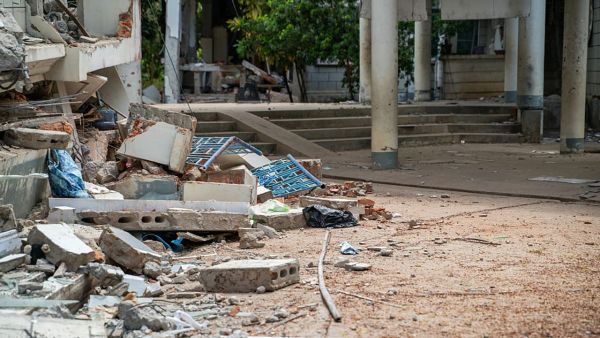

A deadly 7.7 earthquake in Myanmar is helping scientists rethink how faults behave. A Caltech study shows simple faults like Sagaing or San Andreas may cause larger, more complex quakes than previously believed, reshaping future risk models.
Naypyidaw: A powerful earthquake that struck Myanmar earlier this year is helping scientists better understand how dangerous faults like California's San Andreas might behave in the future. On March 28, 2025, a magnitude 7.7 earthquake hit Myanmar along the Sagaing Fault, a major fault line that runs north to south through the country. The quake killed thousands and caused widespread damage. Now, a new study from the California Institute of Technology (Caltech) has revealed surprising findings that could change how scientists predict earthquakes.Researchers used satellite images to track how the land shifted during and after the quake. They found that the fault moved more than expected — over 500 kilometers of the fault slipped, instead of just the 300 kilometers that scientists had predicted. One side of the fault moved 3 meters south compared to the other side.
This unexpected movement shows that even relatively straight, well-understood faults like the Sagaing, and the San Andreas in California, can produce larger and more complex earthquakes than previously thought. "This earthquake was the perfect case to test our new imaging methods," said Solène Antoine, the study’s lead author and a postdoctoral researcher at Caltech. These methods allow scientists to measure how much the ground moved, especially in directions that older techniques couldn’t detect well.
The findings, published August 11 in the journal Proceedings of the National Academy of Sciences, challenge traditional models used to predict earthquake risk. Currently, many earthquake forecasts are time-independent, meaning they only look at the chances of an earthquake happening over a certain period, like the next 30 years, without considering how recently the fault has moved or how much stress has built up. But the Myanmar quake shows that faults don’t always behave in predictable ways.
Simple Faults can Cause Earthquakes
"The study shows that future earthquakes might not just repeat past ones," said Jean-Philippe Avouac, senior author of the study and a professor at Caltech. “Even simple faults like the Sagaing or San Andreas can behave in complex ways and release more energy than expected.” He also explained that historical earthquake records are often too short to capture the full range of what can happen. That’s why this kind of physics-based research — using satellite images and real-time data — is important for building better models and making more accurate forecasts.
The study involved an international team of scientists and was supported by organizations including the National Science Foundation, the U.S. Geological Survey, and the Statewide California Earthquake Center. Their hope: that lessons learned from Myanmar can help improve global understanding of how dangerous faults behave — and help save lives in the future.
-
Inside IPA’s Game-Changing Plan for Pickleball Growth in India

-
World No. 1 Jannik Sinner pulls out of inaugural US Open mixed doubles competition

-
2025 Hockey Asia Cup: Pakistan pulls out over security fears; Bangladesh, Kazakhstan chosen as replacements

-
Portugal prime minister insists ‘everything is ready’ to return to F1 calendar

-
Trent Rockets vs Manchester Originals Match Prediction: Who Will Win Match 20? The Hundred 2025
